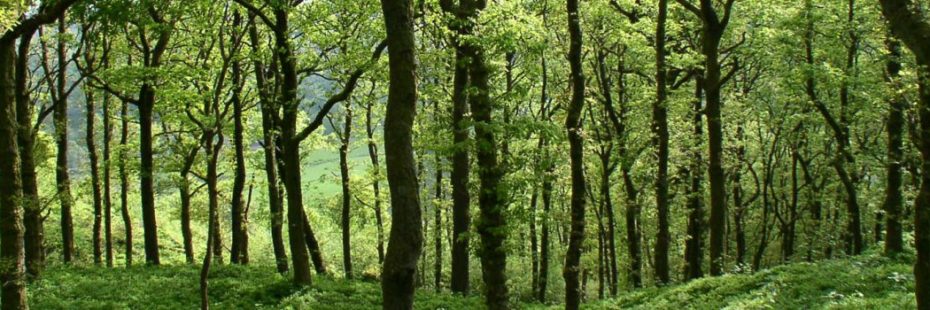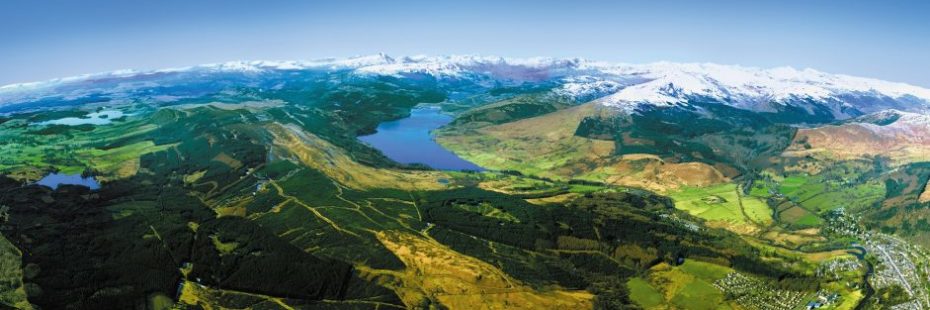
Conservation Outcome C4:
New catchment scale partnerships deliver better integrated management of the land and water environment providing multiple benefits for people and nature.
Why is this outcome important?
Over the life of this Plan it is essential to work in partnership with others to deliver better stewardship of land and water across the public, private and community owned areas that together make up the National Park. Better integration of land and water management across different land ownerships, will be key to increasing resilience in a changing world where more sustainable use of the Park’s natural resources becomes increasingly important.
Scotland’s 2020 Biodiversity Challenge sets out to deliver the international United Nations Aichi Biodiversity target for restoring 15% of degraded ecosystems. In the Park our biggest contribution can be through restoring and enhancing the habitat quality of the large scale woodland, upland and wetland ecosystems that are found here.

Oakwood near Aberfoyle
The majority of these habitats (56%) are owned by private landowners, with 31% being held by state agencies and 4.5% by environmental Non-Governmental Organisations. Therefore it is important that we establish effective, mutually beneficial partnerships with land managers and find innovative approaches to trialling and piloting large scale habitat restoration projects.
The Scottish Government’s Land Use Strategy 2016 identifies the creation of new Regional Land Use Partnerships as a policy that will to bring people together for the better understanding and integration of land use. We wish to lead the way to help deliver this action by establishing and facilitating new Land Use Partnerships in the National Park. These will operate at catchment scales and across land ownerships in order to deliver better stewardship of land and water across public and private land, and involve local communities.
Our priorities for action:
- Conservation priority 9
To lead the way on the new Government policy of creating Regional Land Use Partnerships across the National Park. We will do this by establishing and facilitating Land Use Partnerships operating at catchment scales, across land ownerships and involving local communities. - Conservation priority 10
Support Deer Management Groups to achieve sustainable, long term deer impact management in the Park. This will be done through the development of Deer Management Plans and associated Habitat Impact Assessments, focusing efforts on areas with adverse grazing impacts. - Conservation priority 11
Support for land managers to plan and deliver multiple environmental and social benefits, alongside economic return, through the creation and delivery of Whole Farm and Whole Estate Management Plans.

Aerial view of Loch Lubnaig and Callander
Who can help make this happen?
| LEAD DELIVERY PARTNERS INCLUDE: |
| Scottish Natural Heritage |
| Forestry Commission Scotland |
| Scottish Environment Protection Agency (SEPA) |
| Scottish Government Rural Payments and Inspections Division (RPID) |
| Local Authorities |
| National Farmers Union of Scotland |
| SUPPORT DELIVERY PARTNERS: |
| Private Land Managers |
| Scottish Land and Estates |
| Rural Society for the Protection of Birds |
| National Trust for Scotland |
| Fisheries Trust |
| Confederation of Forest Industries |
| Deer Management Groups |
| Scottish Water |
| Woodland Trust Scotland |
How will we measure success by 2023?
- Land Management – The percentage of land under agri-environment/woodland schemes, whole farm/estate plans and/or management partnerships (e.g. Deer Management Groups).
- Water – The percentage of water bodies achieving good ecological condition.
- Carbon – The percentage of land under woodland and the percentage of restored peatland.
- Natural Heritage – The percentage of designated site features in favourable condition.
Questions
|

